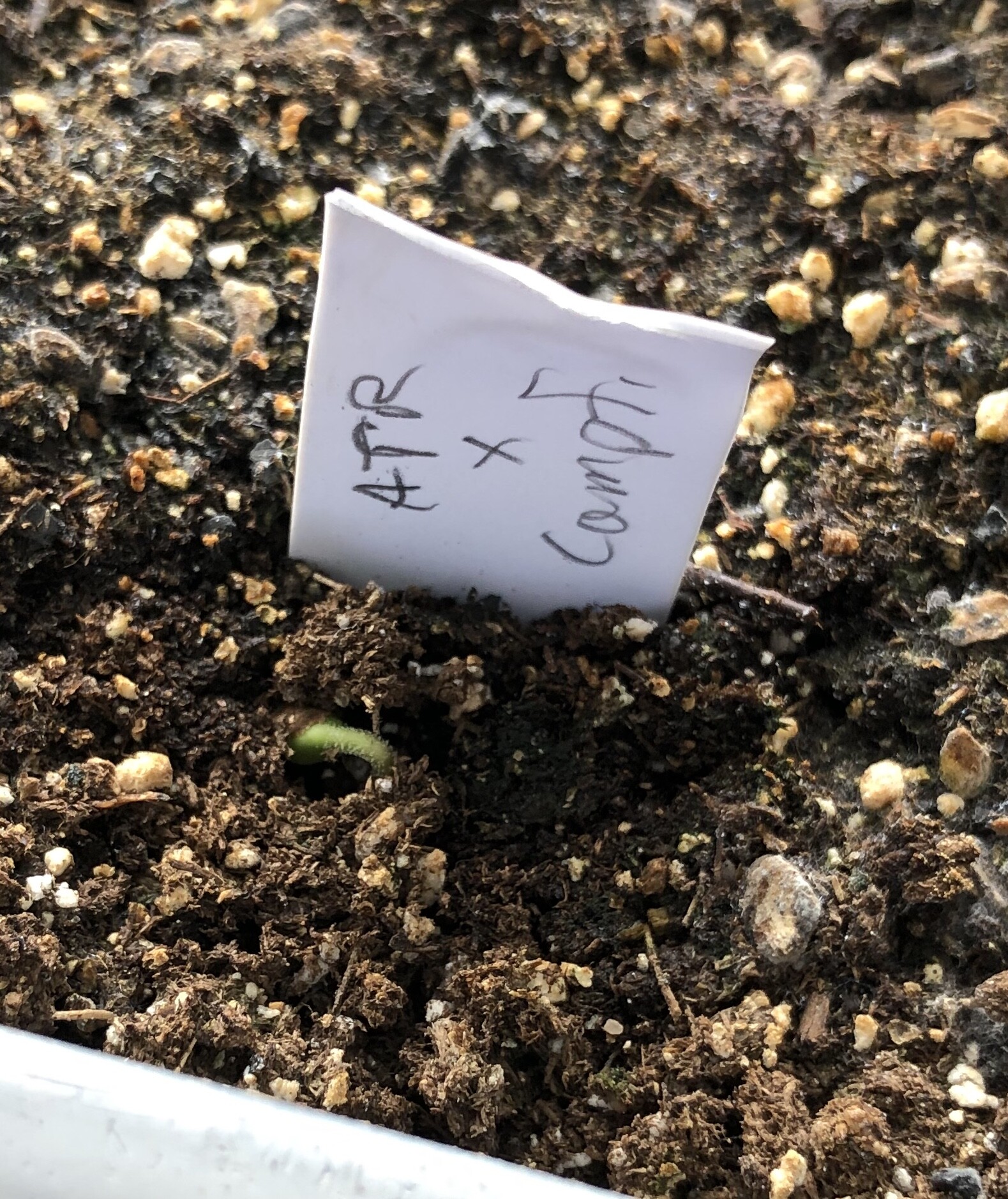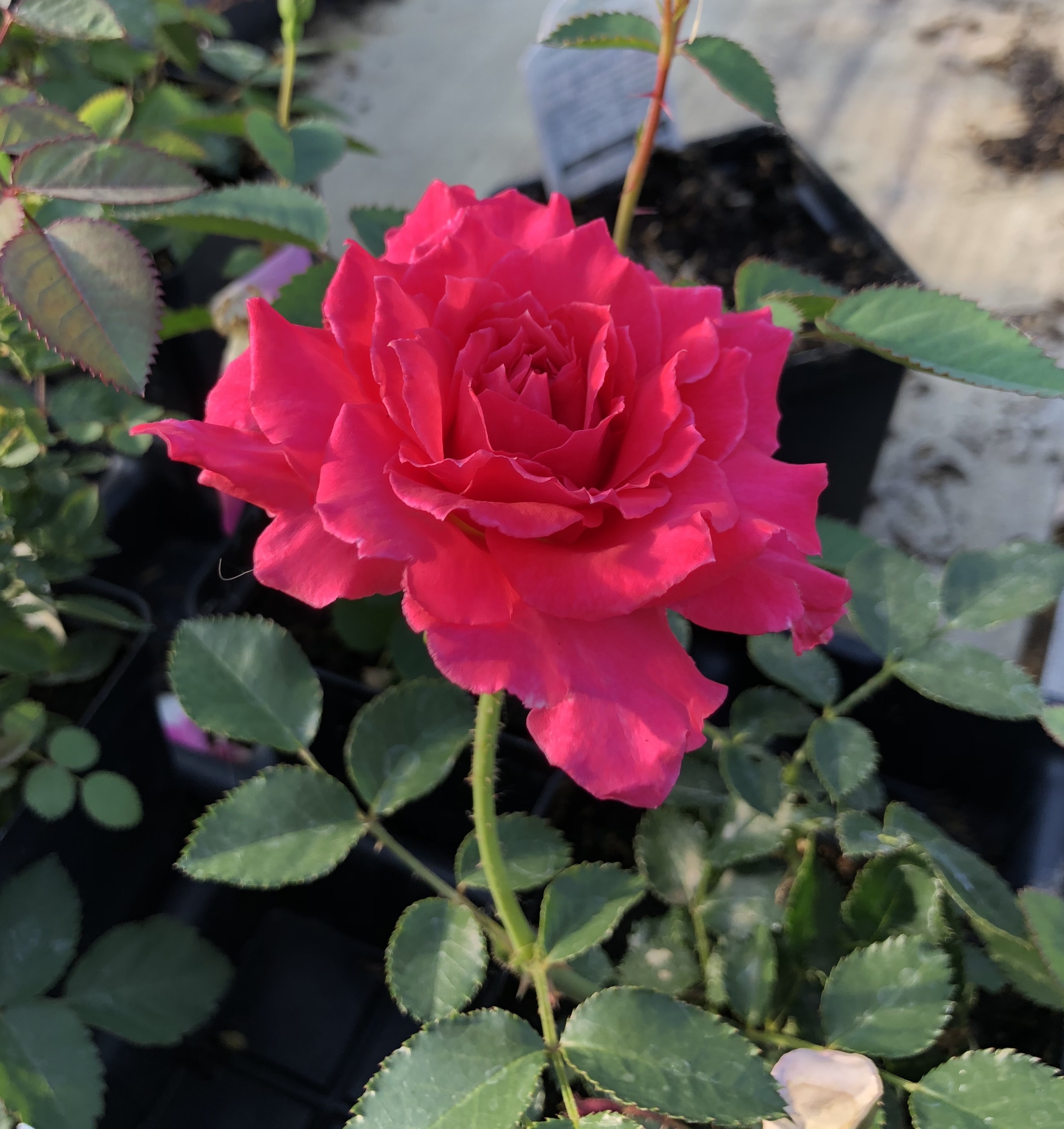Sometimes I get frustrated with myself.
I have the perfect situation to hybridize roses. A nursery and greenhouse business with cultivated land for growing things. A mist bed for propagation. And if I ever decide to sell my roses, patented or not, I have the marketing structure in place to mutually benefit sales of the rose and my business’s reputation. Hybridizing roses is the one thing in my life that I have taken seriously and worked hard at, the one true passion in my life.
I’ve always struggled with what I perceive to be low germination percentages, and have this tendency to jump right in to a new stratification method without testing it. Like the year I killed a lot of seeds by soaking them in pure bleach.
This year I think I’m drowning them. I decided to use activated carbon as my stratification medium. I moistened it and put some in the baggie as I removed the seeds from the hips so that they didn’t dry out. Now when I see that other people are getting germination I break out my baggies and see none. The seeds have all turned black and are difficult to find in the carbon. A lot of the bags seem really wet, too wet. I broke out a fingernail clipper to spot check on the embryos of some expendable seeds. In several cases the achene split at the suture just rubbing it between my fingers, so maybe that’s good or bad that the achenes are softening. However, in several cases the embryo was white but watery…definitely not alive, but not apparently the victim of obvious fungal infection. In other cases the embryo was just black mush. In a few cases the embryo sac (whattya call it, the thin brown wrapping around the achene?) was firm so I couldn’t get myself to squish it and tucked it into a tray of seeds I have in soil under lights.
I hope I’m overreacting. It seems like rose seeds are tough and despite my best efforts I never succeed in completely failing. However, I’m frustrated with myself for this weak link in all of the effort I’ve put into the hybridizing process. I need to come up with a protocol from hip collection to transplant that works for me.
I think as soon as I have time I will sow all of me seeds into seedling flats and return them to cold stratification. (Any method that involves picking seedlings out of baggies wouldn’t work for me because I have soooo many crosses to keep track of and no time for that in the spring.) I will cover them with Perlite or vermiculite, which seemed to work last year.
Next year I think I’ll use moistened Perlite or Vermiculite in the bags and try not to get it too wet. Perhaps moisten it with the 3% hydrogen peroxide solution that Don describes in his embryo rescue protocols. Soak the seeds for a few minutes in a stronger solution before putting them into the perlite.
Anyways, I’m just blabbing. I don’t really have a particular question, but appreciate any discussion you may have.
![701250B%20DC4RF&S%2032ozC-01_275x400[1].png](https://forum.rosehybridizers.org/uploads/default/original/2X/a/aecb9a94b1825317836ffbeb9cecf14f3b1a0861.png)


